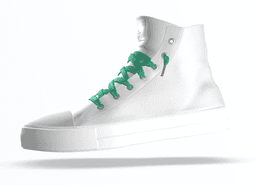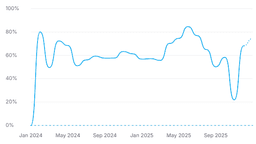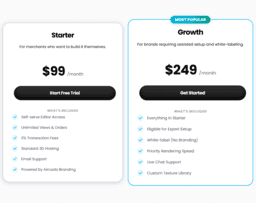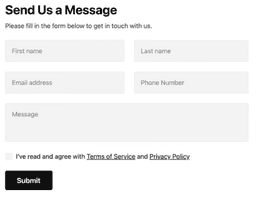Treasure Maps to Google Maps – Digital Transformation across generations
Does ‘X’ really mark the spot?
“There is not a treasure map on the back of the Declaration of Independence!”
Abigail Chase, National Treasure, 2004
I love National Treasure. Nicholas Cage, adventure, secret societies, hidden maps, coded messages and well, Nicholas Cage. We all crave an adventure, but one would have to imagine that this line from Riley Poole would also resonate with us.
“Why can’t they just say, ‘go to this place, here’s the treasure, spend it wisely’?”
In our day-to-day, knowing how to arrive somewhere as quickly, safely and efficiently as possible is far more practical than stealing the Declaration of Independence to look at the map on the back (which wasn’t even a cartograph in the traditional sense).
Alright, what does National Treasure have to do with Digital Transformation?
Let’s think about a treasure map, or any map really. The objective is to bring a person to a destination. When I think about old westerns, and how someone would be instructed to “head west for a day, then when you see the mountain that looks like an arrowhead turn due south for another day until you hit the tiny settlement you are looking for.
Side note: I feel like films do a poor job of painting a realistic picture, because I am of the firm belief that WAY more people got lost in the middle of nowhere and died before reaching their destinations. I loved Quigley Down Under, but Australia is MASSIVE!
Anyways, I digress.
Let’s simplify this and think about getting from NYC to Philadelphia.
Let’s say you have made the drive dozens of times and can get there without thinking about it. Now let’s say you need someone else to go to make the trip for you.
(Think about training a person to replace you when you are no longer able to make the journey.)
Except there are no maps, no road signs, no indication other than buildings, distances and natural landmarks. Imagine writing this out for someone, or describing it. Think about the complexity of the journey and the level of focus it would take to not miss a turn. Think about how many times someone would need to accompany you on this trip so that they felt confident doing it on their own.
This is very similar to how training is traditionally done. Follow along until you figure it out, and hope that there is enough time to learn it. Otherwise you get the napkin drawing and landmarks and distances drawn out and estimated.
Detailed Cartography
As our knowledge of the world grew and as highway systems were developed, movement became far easier. Now there were signs, but you still needed to be familiar with the area, and it still takes a while to figure out the most efficient route to get somewhere. Distances are estimated and you need to track your odometer, taking the focus away from driving.
In the industrial world, think about having to manually operate every single element of a process, manually timing and tracking everything that happens. Physically actuating elements of the process. There is guidance on how to do it, but you will still not be as good as someone that has done the same task for years.
Some would argue that the use of digital tools lends to a surface level understanding of geography. This article sites how paper maps are still relevant, and allow for deeper understanding of a place. Sensory cues and reading in print make it easier for the brain to encode knowledge, forming a “cognitive map”. The writer has a valid argument, as this is analogous to traditional training, or what was once known as an apprenticeship or mentorship.
Except this still does not address that when time and productivity are important, one does not have the luxury of developing deeper knowledge. According to this article from McKinsey, the economy rewards those that move first and move boldly in the realm of digital transformation. If you put two people against one another and tell them to arrive at the same destination, but give one a paper map and another a GPS-enabled tool, we can be confident of which will arrive sooner.
Unless you’re my dad and you never need directions…
Mapquest
Only a certain generation of people will know of the glory that was Mapquest. Now you had the ability to get where you wanted to go, and to have a computer map it out for you! Step-by-step instructions, complete with distances and estimated times. Wonderful, right?
Except now you are still taking the focus away from the operational task of driving, and it was often better to have a navigator assist you. Distances were still manually tracked and focus had to be maintained, lest you miss a turn and take yourself an untold distance in the wrong direction.
Traffic bad up ahead? You won’t know till it is too late.
Road closed? Follow the detour sign and hope that your instructions are still relevant when you find the path again.
Automation without adaptation
Drawing the correlation to the process industry, automation that is in place to accomplish a task is very helpful, but without the additional pervasive sensing and immersive environment as cited here, adaptability to changing conditions is challenging and requires having encountered those conditions before. It is kind of like having the oncoming traffic flash their high beams to let you know that there is a speed trap ahead.
Except there has to be someone that has been there before you to feed you that information.
Google Maps, Waze and Predictive Alerts
Now we arrive in the 21st Century, where we plug in where we want to go and the route is mapped out for us. Not only do we have step-by-step tracking of the waypoints, driven by GPS, but the system learns from other devices, and takes that information to optimize your route.
Traffic ahead? Save 10 minutes by turning here.
Construction in progress? We recommend this route to avoid it.
Other users have reported these speed traps, so be wary.
Always drive the speed limit kids ;)
Now you will be able to get somewhere quickly and efficiently, without ever having made the trip once. The knowledge of generations past is now embedded in the systems, and can adapt to changing conditions. Does this lead to immediate deeper knowledge of how to get from A to B? No, but it will get you there faster and more efficiently, which is what business requires to stay competitive.
Predictive and Adaptive Behavior
How is it that the outcome of an entire business operation is dependent on often antiquated processes? Refineries use technology from the 80’s and 90’s, yet the systems that help me find the best taco joint at 11PM are far more adaptive and predictive than anything you would find at Shell or Exxon-Mobil?
Why is that?
Resistant to Change
People naturally fight any adjustment to the status quo. After all, find me a dad that refuses to use Google Maps because he “looked at an actual map”, and I will lead you to his pair of New Balance’s (comfort and practicality, right?).
Organizations need to start pushing back against this resistance if they hope to keep pace with those that are already adapting. Pervasive sensing, adaptive analytics, training through augmented reality and simulated process environments are all steps in the process of digitally transforming operational environments.
After all, everyone wants to make it to where they are going, but a business that fails to adapt and grow with the technology and times will be exactly where many western settlers ended up.
Gone.







